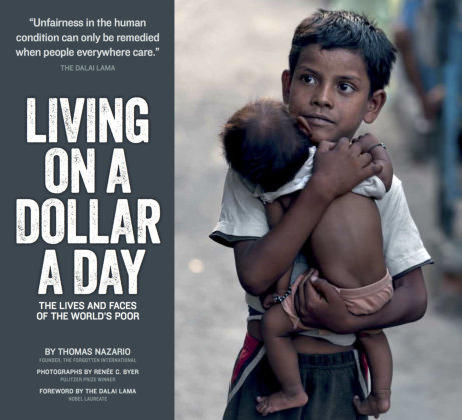













The magazine of the art-form of the photo-essay
“A free, really high quality photo-essay magazine. Fabulous!”
Stephen Fry. British actor, writer and film & documentary maker

May 2014 issue

by Renee C Byer


Slightly over one billion people on the planet live on a dollar a day. While the reasons for their poverty may be different
across geographic regions and political circumstances, the results are much the same. Extreme poverty robs people of
options in life, and the cycle is nearly impossible to break without help. While the poor often work very hard at jobs
many of us would not even consider doing, not having access to basic health care and education keeps them at the
bottom of the economic ladder, usually for generations.
Living on a Dollar a Day shares the personal stories of some of the poorest of the poor, honoring their lives, their
struggles, and encouraging action in those who can help. In making this beautiful and moving book I traveled to four
continents, took thousands of photographs, conducted numerous interviews, and researched information on the
agencies around the world that strive to help the destitute. The resulting stories and photographs offer a heartrending
glimpse into the everyday realities of individuals and families facing extreme poverty. Personal profiles give voice to
their experience, and research about the root causes of global poverty is shared along with information on how those in
more fortunate circumstances can get involved.
Living on a Dollar a Day gives the largely invisible poor a face and a voice. In a world that grows more and more
connected and interdependent, the issues that affect one person eventually affect us all. This important book is a
powerful call to action for anyone who wishes to help alleviate human suffering.
I partnered with the non-profit The Forgotten International for this project.
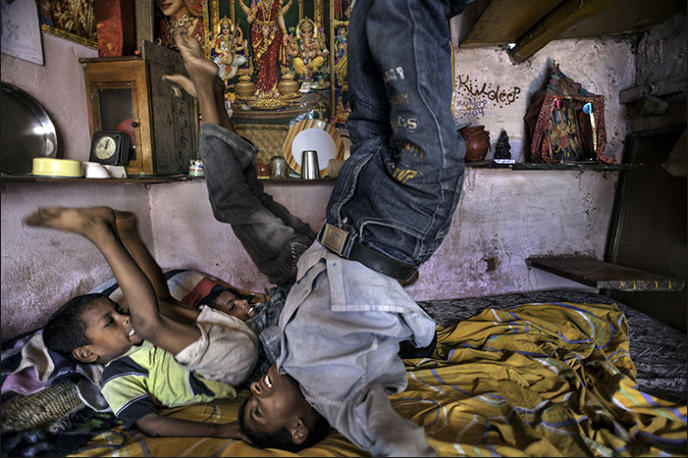
Three of five boys from the family of Dona Devi, 35, and her husband Kamal Singh, 50, play on a bed that occupies
their entire living space in the Kusum Pahari slum in South Delhi, India. From left are Ajit Kumar, 5, Dilip Kumar, 9,
background and Kuldeep Kumar, 10, foreground. Kusum Pahari slum in south Delhi (opposite Hotel Inter continental) is
located on a garbage dump where meat butchers also graze their pigs. The pigs freely roam the neighborhood. There
has been a government order to abolish the slum but the people that have been living there for almost 25 years have
no where to go.
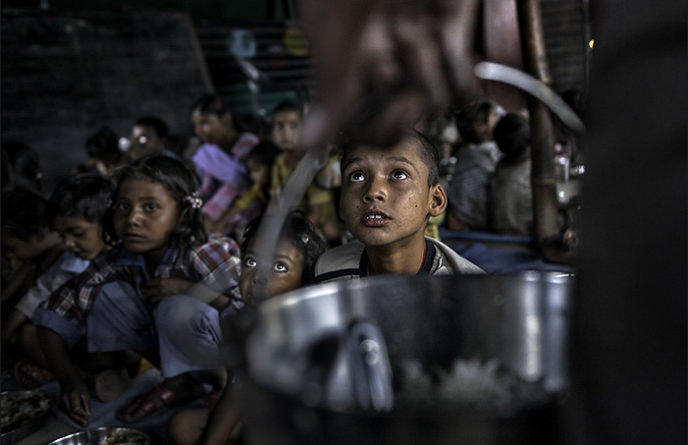
Suraj, 10, waits as rice is passed out in a tent school at the Charan Slum Settlement funded by the Tong-Len
Charitable Trust. If not for this daily ritual many of the children would go hungry. Photo taken in Dharamsala, India.
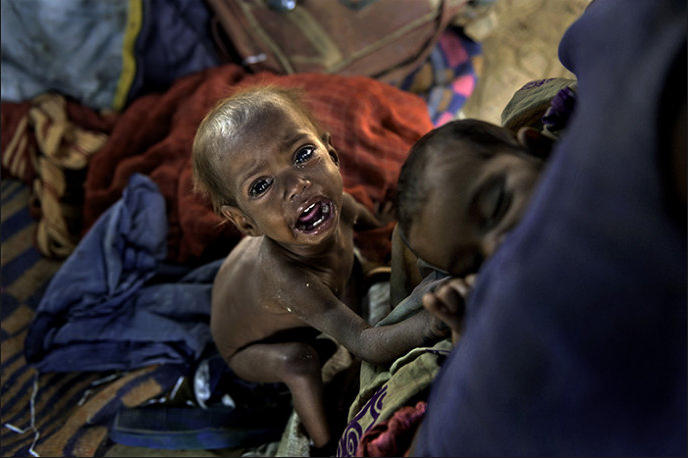
In the Charan slum settlement of northern India, Kalpana, 20, starves one of her children in order to better elicit the
sympathy of others and raise more money through begging to feed the remainder of her family. Sangeeta, 2, weighs
only 9 pounds.

Brothel worker Pinky prepares for another day’s work using makeup to cover a black eye she received from a client.
For many of these women it’s an occupational hazard they endure.
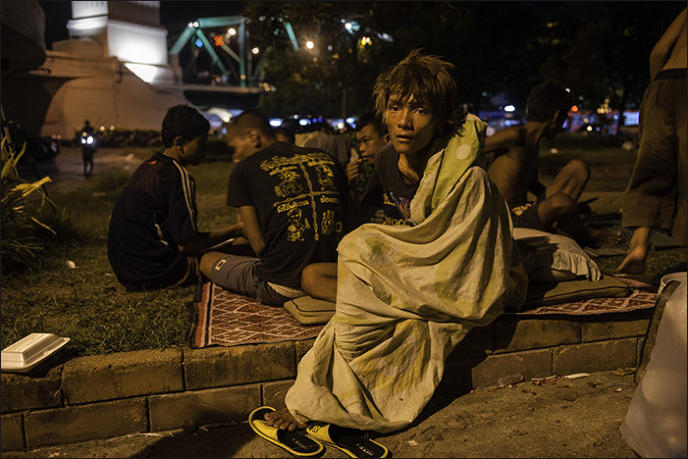
A group of homeless children sleeping on the streets of Bangkok, Thailand, many of whom are addicted to sniffing
glue in order to suppress their appetite and in some ways psychologically escape their circumstances. They survive on
the streets by nearly any means necessary but are more often victimized by others.
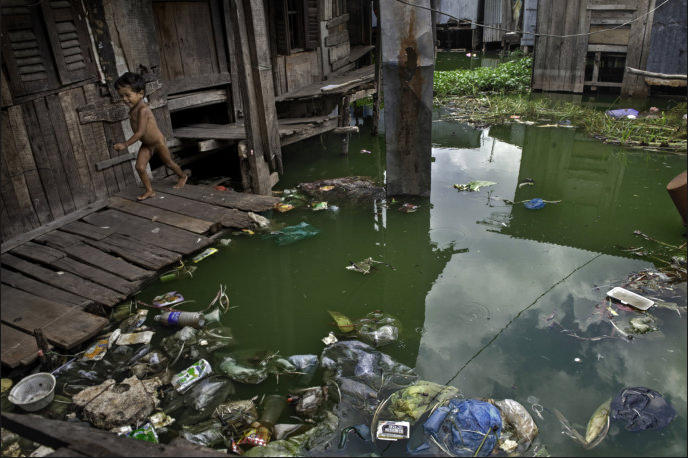
2-year old Panha Sak runs along the polluted water near his uncle’s decades old wooden-structure home. Photo taken
in Phnom Penh,Cambodia on July 13, 2010.
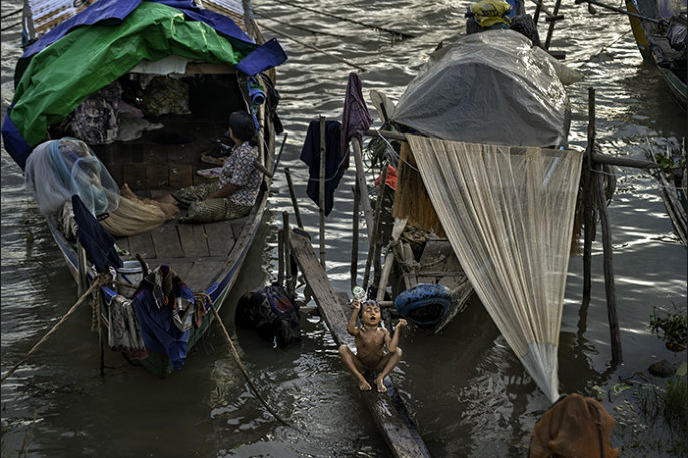
Docked on the shores of the Mekong and Tonle Sap Rivers, in Phnom Penh, Cambodia, these families live their whole
lives and carry on all of their daily activities on small boats. At dusk, You Hai Yati, 4, washes herself in these waters. It
is the same water that she and her family drink and use to cook every day.
She is the youngest daughter of Y You, 50 and Soh Nop, 40. They have 7 children, the oldest is 24. None of them
have ever gone to school as their parents could not afford it. They can not read or write at all and only one of them has
had a job rather than fishing along with their parents. They have been living on a boat along Tonle Sap and Mekong
River Banks in Chroy Changva commune, Russei district of Phnom Penh since the fall of Khmer Rouge in 1979. They
own no land or house. They own one boat a few chickens and a two year old fishing net that they keep repairing.
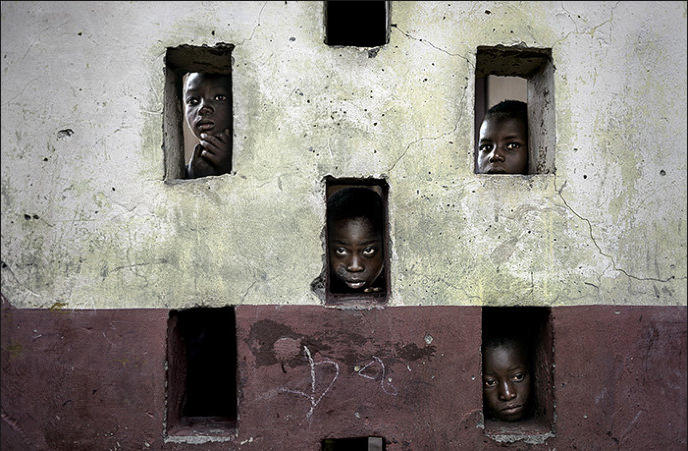
The little boys Tibetob Gmafu, 5, left, Bidimei Gmafu, 5, center, Dawuni Bisun, 7, upper right, and Ninankor Gmafu, 6,
below, seek coverage from the rain as they keep an eye out on the cows. The children say they are not allowed to
bring the cows home in bad weather for fear that they will be beaten. Photo taken in the village of Dawa in the volta
region of northern Ghana on August 20, 2010.
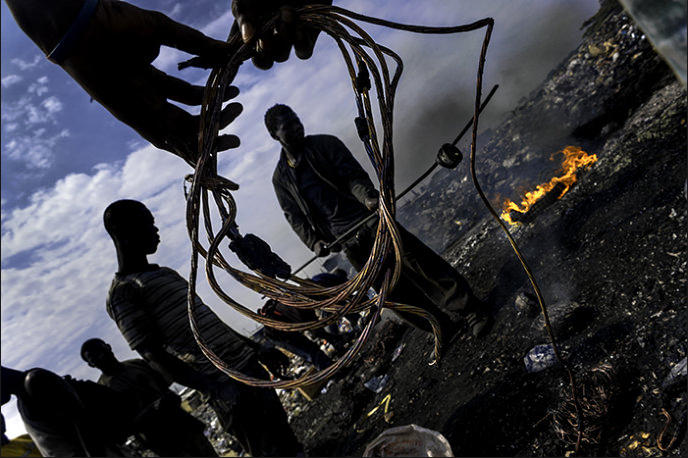
Older boys, such as Mohamed Abukari, 17 (framed center), usually are first to burn and pick through the residue of
discarded computers for copper wiring or any other valuable metals. In the background, other boys are getting ready
to ignite more items into flames. These boys make the most money at this electronic waste site while younger children,
who go through what’s left, make almost nothing in Accra, Ghana.

Tears stream down the cheeks of Fati, 8, as she suffers a headache from Malaria. She balances a bucket on her head
of small metals she has sifted through toxic debris in a e-waste dump to find using a magnet with her bare hands. She
is very unhappy and wants to return to the north to her family and go back to school but her mother moved her to
Accra. She says she has a horrible cough from inhaling the smoke. Her mother says that her husband has four wives
and did not treat her well and that's why she left. Fati suffers from stomach pains and headaches and they have no
money to go to a hospital. Her mother Rahinatu, 40, came to Accra after her sister gave her the money to leave Yendi.
She goes to work as a porter carrying heavy loads every morning at 3 a.m. She wishes she could go back north
because she misses her other three children, all boys. One son died at age 10 from high fever. They are muslim and
go to a mosque and pray every day. She prays for a long life and that God will take care of her daughter because they
live in a very dangerous place. She is unaware of the harm her daughter is suffering from working at a toxic waste
dump. After they go to mosque they eat if they have enough money, sometimes they don't.
Does she think her life will ever change? If I get money my life could change. I would like my daughter to be a
seamstress and her daughter would rather wash clothing then work in the dirty filthy toxic garbage dump.
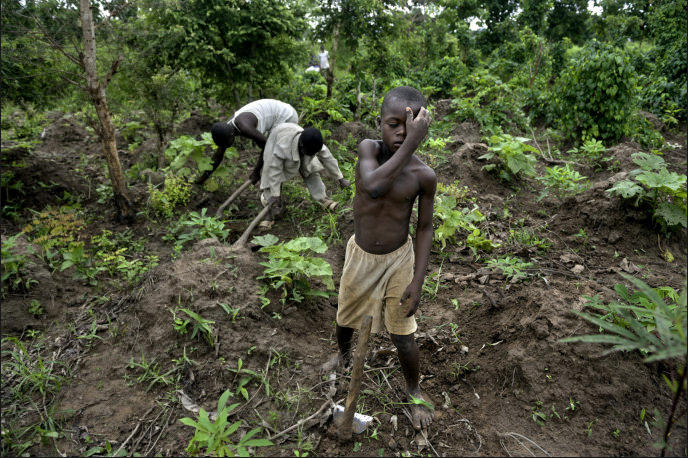
Kwame Joshua, 6, suffers from malaria but still must work to help his family, for it is in part his labor that helps keep
them alive.
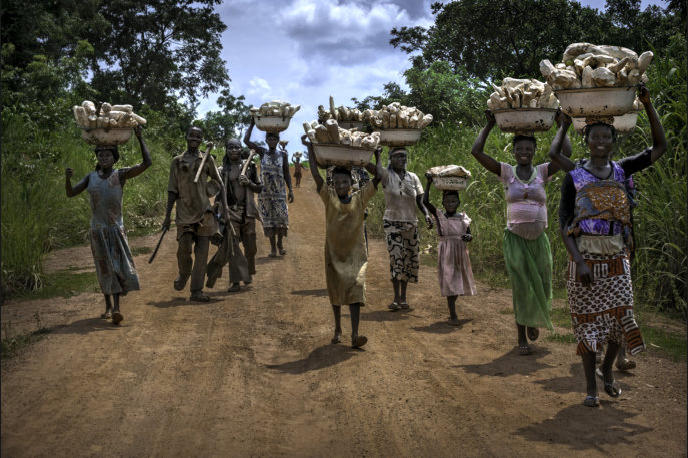
Women and children carry metal pans filled with cassava after harvesting them in the Volta region in Northern Ghana
on August 19, 2010. Men supervise the women and never are seen carrying anything on top of their heads.
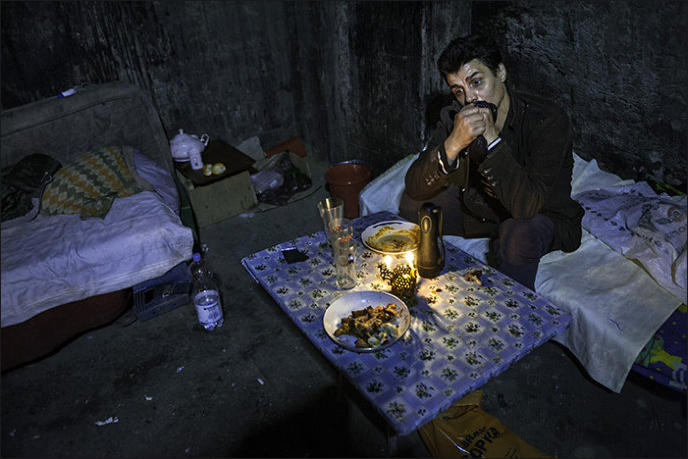
In Bucharest, Romania, some of the city's poor climb down into underground heating vents or sewers, where they live
and eat by candlelight for there is no electricity. Here Hora Florin, 28, a victim of the Romanian dictator Nicolae
Ceasescu's orphanages and one of Romania's lost generation of children, lives underground where the heating vents
keep him warm at night.
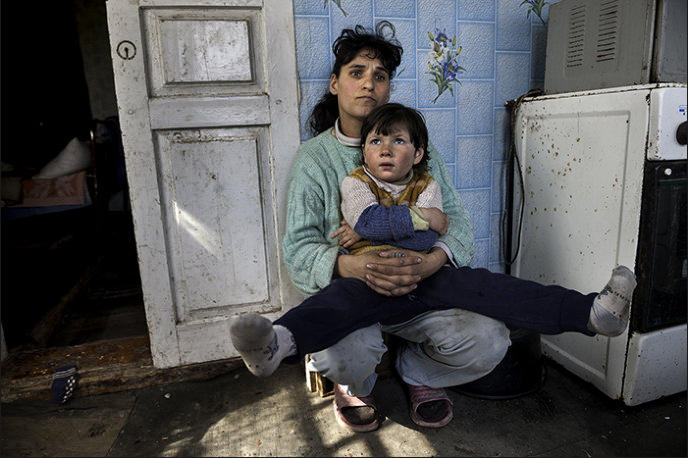
Lidia Potcovirova can't afford to send Anastasia, 4, to school so her daughter often accompanies her mother to work in
the fields. They live in Fintinita, Moldova.
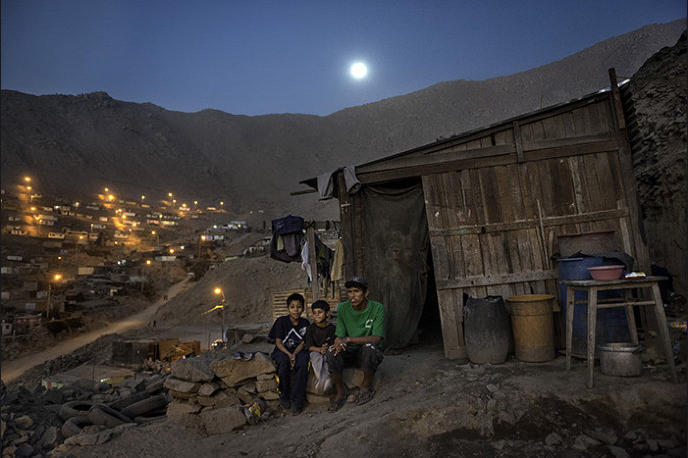
On a hillside overlooking the city of Huaycan, Peru, sit three boys who await their mother’s return home. Their mother
sings on the street and in buses to try to make a living and provide for them, yet not even the 10 x 10–foot home they
live in is theirs. At least they have each other.

The children at La Sagrada Familia orphanage in a slum outside the city of Lima all come running when food is
awaiting them.


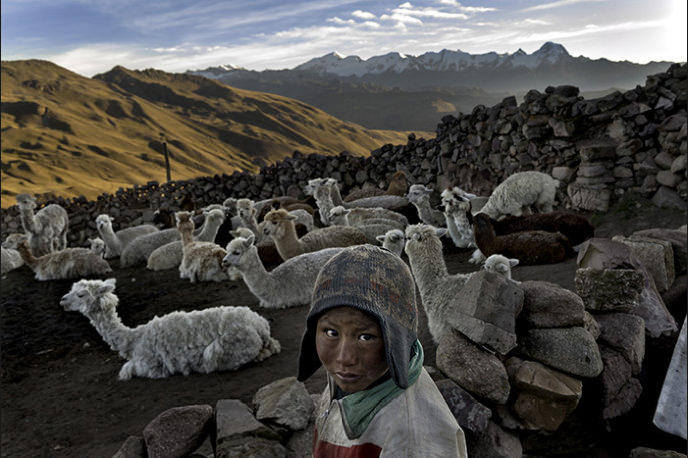
Alvaro Kalancha Quispe, 9, opens the gate to the stone pen that holds the family’s alpacas and llamas each morning
so they can graze throughout the hillsides during the day. He then heads off to school, but must round them up again
in the evening, for this is the work he does for his family.
